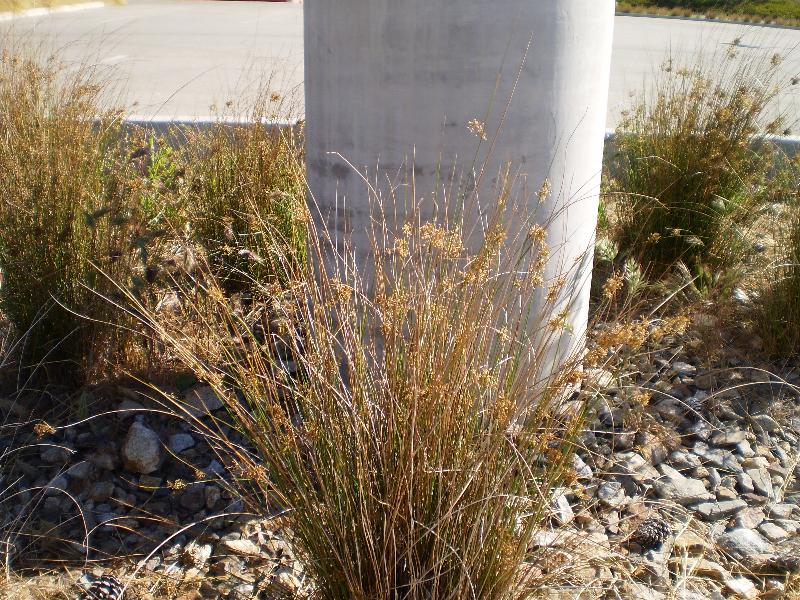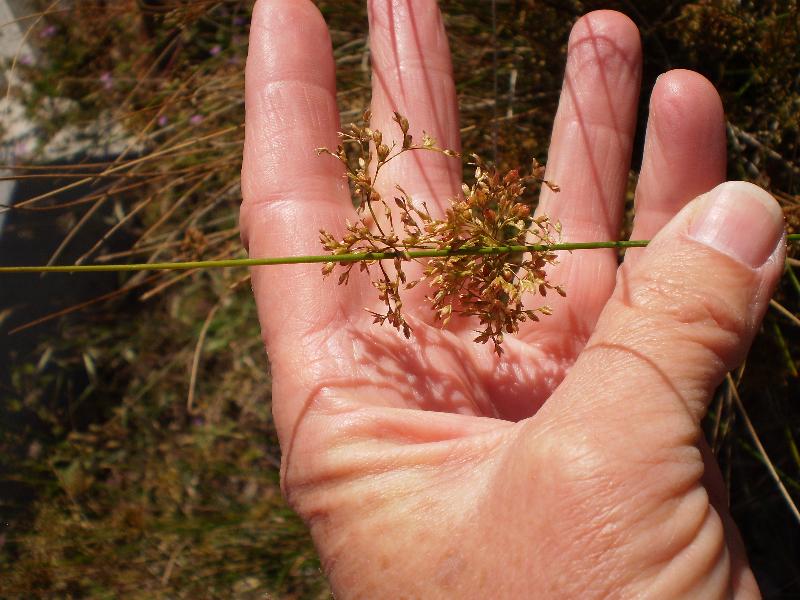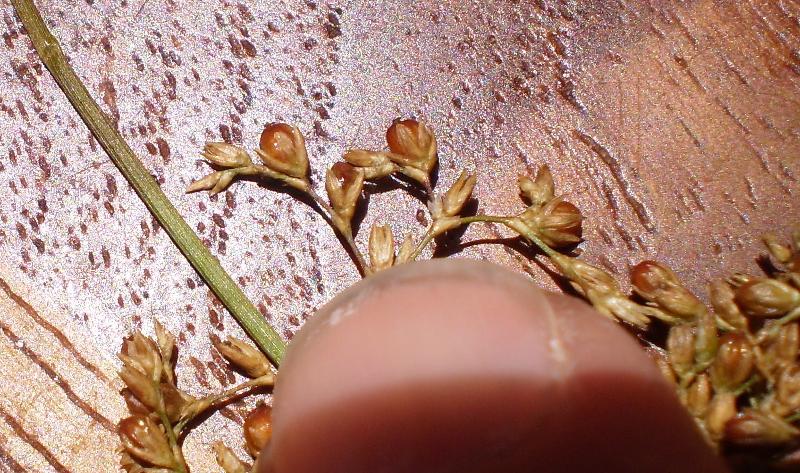
Monocots
The two largest groups of flowering plants (angiosperms) are the monocots and the eudicots.

Most of the families we have been studying are members of the gymnosperms or eudicots. The Poaceae is the only monocot family you have studied so far.
There are numerous differences between the eudicots and monocots. They are summarized in the table below.
|
|
Eudicots |
Monocots |
|---|---|---|
|
Number of cotyledons in embryo |
Two |
One |
|
Number of petals, sepals, and usually stamens |
In multiples of 4 or 5 |
In multiples of 3 |
|
Major leaf veins |
Branched or reticulate (netted) |
Parallel |
|
Vascular tissue in stem |
A ring of vascular bundles, sometimes forming a cambium and wood |
Scattered vascular bundles, never forming true wood |
The characteristic for which the two groups are named (the number of cotyledons in the embryo) is rarely used in field identification of species. However, the combination of leaf venation and flower part number are good indicators of whether a plant is a monocot or eudicot.
Some monocots (like palm trees and Joshual trees) may grow to be large and tree-like in stature, but they do not acheive this by producing wood from a vascular cambium.
Review:
There are many monocot families that have typical monocot features. Some have flowers with showy petals. We have members of several of these families in our area. Examples of these families are shown below.

You will not be responsible for identifying the families above (except to recognize that they are monocots).
Three common families with less showy flowers (the grasses, sedges and rushes) are sometimes difficult to distinguish unless you know what to look for. They are often look grass-like. These families are the Poaceae (the grasses), the Cyperaceae (the sedges), and the Juncaceae (the rushes). You will be responsible for recognizing these.
You already know the Poaceae. 
Like the Poaceae, flowers in the Cyperaceae (the sedges) have no perianth and occur in spikelets. Structurally, however, the spikelets differ from those of the Poaceae.
The most easily identifiable difference between the Poaceae and Cyperaceae, however, is that the stems of the Poaceae are round in cross-section, whereas the stems of the Cyperaceae are triangular in cross-section. (People remember this by remembering that "sedges have edges".) Illustration "C" in the image below showes a cross-section of stem "D".

Members of the Juncaceae, are commonly known as rushes. Their flowers DO have a perianth, The perianth parts are small and green or brown, and often overlooked. As in many other monocot families, the petals and sepals are similar in size and color, and are often refered to as "tepals". The inflorescence is often open and panicle-like.

Therefore, the flowers of the Juncaceae differ from those of the Cyperaceae and Poaceae. Those differences are shown below.

The following three photos are of a plant growing in a parking lot at CSUSB. It is in one of the families you should recognize.



Below is an image of reproductive parts of a member of the Cyperaceae.
